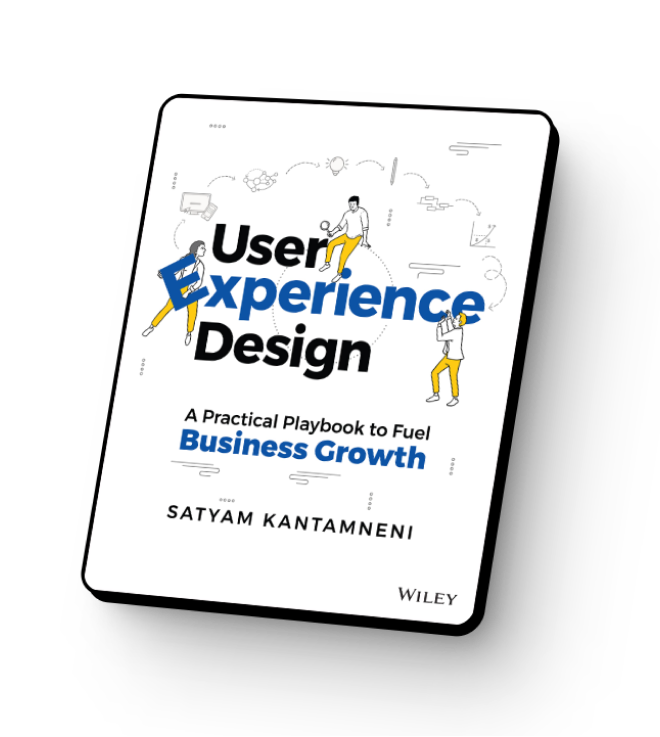“We know our product is clunky and unintuitive (read: suboptimal). We’ll invest in big changes at some point, but the pressure is on to constrain costs over the next 18-24 months. For the moment, we plan to tweak the interface and make some ‘low-hanging fruit’ changes. What do you think?”
Glad you asked.
I’ve been here before, and the reality is that if your B2B tech or SaaS product has been skating by with clients, it could be on the chopping block in this current economic climate.
The following year or two will be challenging for tech and SaaS companies. If you plan to “out-accelerate” your competition, you will need more than a suboptimal product.
Why? As I shared in my recent Economic Outlook, undifferentiated technology and software will be the first to fall in a crowded market.
Your proprietary product must be at least 10x better than the closest substitute, and in ways that are do-or-die relevant to your buyers.1
This has always been true. But ironically, a challenging economy helps make the point I’ve been driving home to leaders for years. The more unforgiving the environment, the more rigor you need to create an unforgettable product experience that your ideal customers cannot possibly live without.
Those who will survive? The winners who possess the discipline required to go beyond their assumptions and discover which critical pain points their customers will pay more to solve. Then, they’ll solve those problems 10x better.2
Understanding your users’ pain points and designing an unparalleled experience is going to be your best crack at putting serious distance between your product and every other alternative.
Let me explain.
The Reality: If Your B2B Tech or SaaS Product Was Skating By With Clients Before, It Could Be On The Chopping Block.
From your end, the symptoms of a suboptimal product include…
- Customer churn
- Decreased adoption rates (including fewer trials to paid)
- Rising support costs
For your customer, the symptoms of a suboptimal product are that it’s clunky, unintuitive, or redundant. And as budgets get tighter and every SaaS expenditure is carefully scrutinized, it’s all too easy to give it up.
If this is your reality, tacking on new features can further erode an already sub-par experience if poorly executed. While it feels like you’re staunching the bleeding, this can wind up being an expensive misallocation of resources.
“Is now really the time to make big changes?” you ask. Trust me, it is. Don’t wait for the market to stabilize before you make serious changes to differentiate your product.
Attempting to time the market or your competition is foolhardy–you can only focus on the user. Don’t be that founder or leader who wishes they did more than guess what might work.
The Silver Lining: There is Safety in Differentiation
There are two pathways you can take to optimize your product and go after your competition:
Pathway 1
You can copy what they are doing, presuming they are getting traction, and hoping you will too.
Pathway 2
Or, you can get laser-focused on your user, digging in and understanding their pain points with crystal clarity. Then, you ask: How do I solve that?
If you come to the same solution as you would have by copying your competitors–fine (although this rarely occurs!). But now you know your strategy is sound with your users and their needs squarely at the center.
If your product and business model will outperform your competition, you need to dig in and genuinely understand your users and their problems with crystal clarity. Then, you need to invest the resources to solve these challenges 10X more effectively than anyone else.
Need proof? Let’s take a look at two real-world startups that managed to out-perform the competition with superior product-market fit.
Tekion: Unicorn Status in Just Five Years
Tekion – one of our clients from the automotive industry – grew to $3.5B in 5 years by digging deep to understand customer pain points and designing a standout product experience.
Founded in 2016 by two ex-Telsa technology executives Jay Vijayan and Guru Sankararaman, Tekion set out to disrupt the automotive retail industry with an end-to-end platform that would connect automakers, dealerships, and customers, while putting user experience (UX) at the center.
Why was this so crucial? Well, traditionally, the automotive industry has been notorious for frustrating, disconnected customer experiences. Often, a fragmented, legacy dealer management system (DMS) has been the culprit.
In many cases, the disconnect between sales, financing, and service was obvious for customers buying vehicles, who did feel well-taken care of by their dealership, to say the least.
For dealers–the high cost of DMS has been eating into their profits, plus they could miss revenue opportunities when the system failed…for example, if a sales rep couldn’t price a car competitively based on the customer’s lifetime value.
Most companies — even those known for design — focus their design efforts entirely on customer-facing experiences while neglecting the back-end experience. Yet when employees have poor user experiences with those back-end tools, they can rarely (and only with great effort) deliver an outstanding customer experience.
Fast forward two and half years, and in 2020, Tekion launched Automotive Retail Cloud ™, successfully disrupting the industry. Based on the success of their flagship product and Tekion’s experience design momentum, the startup tripled in value from over $1B in 2020 to $3.5B in 2021.
How did they do it? They chose pathway number two, with our help. You can read more about their story here.
One Medical’s Focus on Customer Experience Results in Multi-Billion Sale to Amazon
Here’s another example. One Medical is a health care start-up just acquired by Amazon to the tune of three and a half billion.
The company was started in 2007 by Tom Lee, and from the start, its focus was on understanding and solving pain points that have been frustrating healthcare customers, employers, providers and health networks for years. Challenges like:
- Wait times for consumers
- Affordable benefits to employees
- Provider burnout due to tedious administrative takes
- Care services coordination by health networks
First, this start-up took the time to dig in and understand its customers’ needs–and those of the broader system of stakeholders.
Around this core understanding, they built a business model, distribution plan, operational processes, website, mobile apps, and in-office experience that not only solves these problems – but has excelled in delighting customers, resulting in a Net Promoter Score (NPS) of 90.
One Medical also chose pathway number two, resulting in delighted patients, a lucrative merger, and the runway to continue transforming healthcare with a customer focus.
Ready to Lead Your Market? Here’s Where to Invest:
Where should you invest if you’re looking to differentiate your product and lead your market? Research from past downturns3 tells us that:
Companies that came out of a recession strongest were selective. They only pared back where necessary. They made more significant investments than their rivals in R&D and marketing.
Last recession’s winners stayed “closely connected to customer needs — a powerful filter through which to make investment decisions.”4
It’s your job to find out what your specific customers need.
As long as users exist, you’ll have a business; that’s the fundamental truth.
And as long as you can deliver on these needs effectively, you’ll keep building loyalty and relevance.
The next big questions are:
- How are you going to uncover and react to critical customer insights?
- How do you disseminate these insights to all your teammates in the company?
- How will you build a rapid product iteration engine to create and hold your competitive edge?
Is Your Product Strategy Copyable?
Now, pay attention: If your team is wasting time tinkering around with the UI, your competitors can easily copy that. Even UX is copyable in a matter of months.
Over the next few years, leaders who are serious about having a competitive edge are approaching product strategy in a radically different way. Inspired by the needs of their users, these leaders are building (or retooling) products and creating experiences that customers wouldn’t dream of leaving.
That’s how you’ll go from surviving to building an economic moat that will take decades to copy. This is what it means to go the extra mile to Experience Transformation. This is the real competitive edge.
What’s Next?
You’re ready to make offensive moves in the face of the downturn. You see it as an opportunity to capture market share with more innovative products and exceptional experiences. In the next 18-24 months, UXReactor will work with serious founders and leaders facing the recession with ambitious goals. If you’re up for this challenge, let’s talk.


